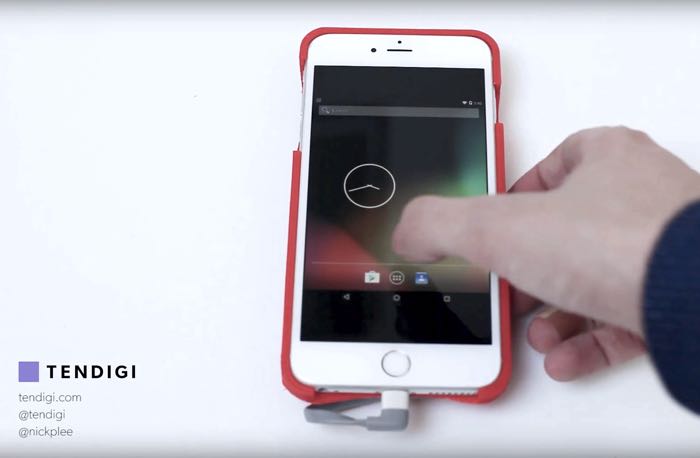-
Tips for becoming a good boxer - November 6, 2020
-
7 expert tips for making your hens night a memorable one - November 6, 2020
-
5 reasons to host your Christmas party on a cruise boat - November 6, 2020
-
What to do when you’re charged with a crime - November 6, 2020
-
Should you get one or multiple dogs? Here’s all you need to know - November 3, 2020
-
A Guide: How to Build Your Very Own Magic Mirror - February 14, 2019
-
Our Top Inspirational Baseball Stars - November 24, 2018
-
Five Tech Tools That Will Help You Turn Your Blog into a Business - November 24, 2018
-
How to Indulge on Vacation without Expanding Your Waist - November 9, 2018
-
5 Strategies for Businesses to Appeal to Today’s Increasingly Mobile-Crazed Customers - November 9, 2018
Someone Got Android to Actually Run on an iPhone
Developer Nick Lee, through a post on the official Tendigi blog, unveiled a special 3D-printed case for the iPhone to make the combination work. His last trick was to load up Windows 95 on an Apple Watch, which was terribly useless but somewhat interesting as a proof-of-concept. While the iPhone is able to display the Android operating system, the Android OS itself is powered by the hardware in the case.
Advertisement
A first trial gave Nick Lee a case that resembled early versions of mobile phones in terms of thickness.
You can find out more information on excatly what was involved to get Android running on the iPhone at the link below. The 3D printed enclosure also housed a battery and boost converter.
There’s even a USB port, HDMI out and room for a microSD card, all in the case, so it’s not dependent on the limitations of the iPhone, which simply becomes a conduit.
The entire setup here comprises of three elements, a custom build of Android, a board that ran Android, and a 3D printed case to hold the board in. In his YouTube demonstration, Lee appears to slip a light sheet of plastic over the components before placing an iPhone on top. For some iPhone owners, putting Android on Apple’s hardware might seem like a great idea.
On the software side, Lee modified the Android Open Source Project, the base source code for all Android versions, to include specific processes and programs that, in a nutshell, communicate with the iPhone over USB, transmits the contents of the Android screen, and then translate touch events from the iPhone to Android.
Advertisement
While the experiment does require some tools that not many have access to, it does demonstrate one important fact: that iPhones can indeed run custom open-source versions of Android, with the right equipment, of course.




























